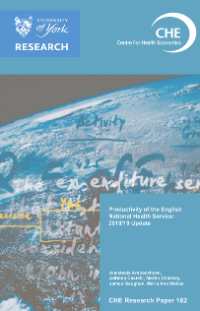Drivers of health care expenditure: Final report
Posted on 29 August 2019

Since the NHS was established in 1948, growth in health care expenditure (HCE) has outpaced the rise in both GDP and in total public expenditure. Known drivers of HCE growth include demographic factors, income and wealth effects, technology and cost pressures. To identify the challenges and opportunities for developing a model of healthcare demand, this report addressed two research questions:
What are the drivers of past trends in health care expenditure and how much has each of the drivers contributed to past increases in expenditure?
How much has each type of service contributed to past trends in health care expenditure and why have there been different trends for different types of care?
We set out a conceptual framework for understanding drivers of HCE, placing it in the broader context of underlying drivers of demand and macroeconomic trends. We reviewed studies from higher-income countries published over the last decade, and analysed datasets compiled in-house of cost and volume of care by different settings. We linked data on HCE trends to relevant, setting-specific evidence from the literature review.
We identified 52 studies using aggregate data and 54 individual-level studies. The relative contribution of different drivers could not be quantified due to heterogeneity in study methodologies. Aggregate studies using longer panels of data show that the relationship between HCE and its drivers is non-linear, varies over time and varies cross countries. These studies mostly find a strong, positive relationship between HCE and technological progress. Individual-level studies usually rely on observational, non-experimental data from administrative databases, such as claims data or registers, or on survey data or cohort studies. Trends in HCE from 2008/9 to 2016/17 reveal that the largest rises were in high cost drugs (231%), chemotherapy (113%) and attendances at A&E (59%) or outpatient departments (57%). Most evidence on the drivers of HCE related to hospital care, but we found no studies explaining the factors behind the rise in expenditure on chemotherapy or high cost drugs.
We conclude by presenting four lessons that could inform decisions on building a projections model of health care expenditure.
Full Report:CHE Research Paper 169 (PDF ![]() , 2,118kb) and 169 Executive summary (PDF
, 2,118kb) and 169 Executive summary (PDF ![]() , 711kb)
, 711kb)
Other papers in the CHE Research paper series can be found at: CHE Research Papers

